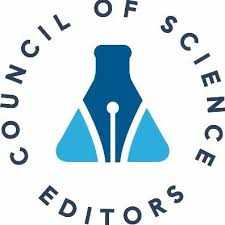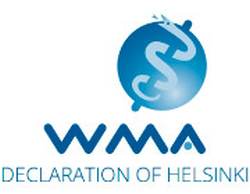INTRODUCTION
According to the classification of the Childhood Glaucoma Research Network and World Glaucoma Association, pediatric glaucoma is divided into glaucoma associated with congenital eye abnormalities, glaucoma associated with congenital systemic diseases or conditions, glaucoma associated with acquired systemic conditions, and secondary glaucoma after cataract surgery. Secondary childhood glaucoma is a heterogeneous group of diseases resulting from congenital or acquired eye abnormalities, diseases, and systemic syndromes.
Secondary glaucoma is among the most common complications after congenital cataract surgery and has an incidence of 6-58%, depending on the anomalies of the eyeball associated with congenital cataract, and the age at which the surgery was performed. The incidence is higher in small eyes and newborns operated on before the age of 4 weeks [1-3]. According to the Infant Aphakia Treatment Study (IATS), the risk of secondary glaucoma increases to 31% 5 years after cataract removal. Considering this common postoperative complication, it is important to carefully monitor intraocular pressure in children attending follow-up appointments after congenital cataract surgery. It is also important to remember that children may not manifest discomfort despite a high intraocular pressure. Elevation of intraocular pressure may occur immediately after surgery or after several months or years, but the risk of developing secondary glaucoma after congenital cataract surgery continues throughout life [4-7]. The mechanism underlying the increase in intraocular pressure after congenital cataract surgery remains unclear. Post-surgical obstruction of aqueous outflow at the open iridocorneal angle may be associated with abnormal development, surgically induced inflammation, loss of lens support or vitreous body displacement [8].
Decisions regarding anti-glaucoma treatment in eyes after congenital cataract extraction are difficult because many risk factors for postoperative complications should be considered. Intraocular inflammation, strabismus, hypotonia, and other complications are more common in children after conventional trabeculectomy than in adults [5, 9]. Cyclodestructive treatments, which until recently were restricted to the most advanced forms of glaucoma, have undergone major changes in recent years. Micropulse transscleral cyclophotocoagulation (MP-TSCPC) is the most established and safe method used in both adult and pediatric patients. A diode laser destroys the ciliary body epithelium, resulting in reduced secretion of aqueous humor and, consequently, a decrease in intraocular pressure. MP-TSCPC consists of a series of repetitive energy pulses with rest periods between them. The “energy-off ” periods allow for heat dissipation with no major damage to the collateral tissue. This safer approach to cyclodestruction minimizes the risk of side effects, such as uveitis, chronic hypotonia or choroidal detachment [10-12].
AIM OF THE STUDY
This study aimed to evaluate the efficacy and safety of micropulse transscleral cyclophotocoagulation (MP-TSCPC) in children with secondary glaucoma after congenital cataract surgery.
MATERIAL AND METHODS
The study group consisted of 22 patients (23 eyes) with secondary glaucoma, who underwent micropulse transscleral cyclophotocoagulation under general anesthesia in the Department of Pediatric Ophthalmology, Medical University of Silesia, between 2020 and 2022. The mean age of the patients was 5 years; the youngest child was 11 months old, and the oldest was 17 years old.
Among the cases analyzed, there were 13 eyes with aphakic glaucoma after lensectomy for congenital cataract, 4 eyes after congenital cataract surgery with persistent fetal vasculature, 1 eye with mesodermal dysgenesis of the anterior segment, 1 eye with aphakia associated with removal of a subluxated lens, 3 pseudophakic eyes, and 1 aphakic eye after congenital cataract surgery 1 eye with aniridia.
Corneal pachymetry, and intraocular pressure measurements were performed prior to each MP-TSCPC. The procedure was performed using Cyclo G6 laser (Iridex, Mountain View, CA, USA) with a MicroPulse P3 Glaucoma Device (wavelength 810 nm, power 2,500 mW). The treatment technique consisted of the slow movement of the probe along the lower hemisphere of the corneal limbus. When the IOP was below 30 mmHg, four 20-second probe slides over the limbus were applied. In patients with IOP equal to or exceeding 30 mmHg, four 20-second slides and an additional 10-second slide were performed. Each procedure ended with a subconjunctival injection of a steroid and antibiotic, application of an antibiotic ointment to the conjunctival sac, and a sterile patch over the eye. After the procedure, non-steroidal anti-inflammatory eye drops were used.
The eyes were divided into two subgroups, those in which some previous anti-glaucoma treatments had been used (12 eyes) and eyes in which cyclophotocoagulation with the micropulse laser was the first treatment (11 eyes). Pre- and post- MP-TSCPC intraocular pressures were analyzed. In the subgroup of eyes with previous anti-glaucoma treatments, 8 eyes had previously undergone a combination of trabeculectomy and iridectomy, and 4 eyes had been subjected to trabeculectomy with iridectomy and diode laser cyclophotocoagulation.
RESULTS
The mean pre-MP-TSCPC intraocular pressure in all eyes included in the analysis was 29.56 ±7.7 mmHg. The mean IOP in the subgroup of eyes with previous anti-glaucoma treatments was 30.75 ±7.9 mmHg, while the mean IOP in the subgroup without previous treatment was 28.27 ±7.6 mmHg.
One year after cyclophotocoagulation with the micropulse laser, the mean intraocular pressure in all eyes was 24.44 ±4.3 mmHg. In the subgroup of eyes with no previous anti-glaucoma treatments, the mean IOP was 24.8 ±4.9 mmHg, while in the eyes after trabeculectomy with iridectomy or trabeculectomy, iridectomy and diode laser cyclophotocoagulation, the mean intraocular pressure was 24.1 ±3.8 mmHg.
The mean IOP decrease in all the eyes was 17.2%. The mean decreases in the subgroups of eyes without previous anti-glaucoma treatment and eyes after past anti-glaucoma interventions were 12.4% and 21.5%, respectively.
The mean decrease in IOP was significantly greater in the eyes after previous anti-glaucoma interventions. No adverse effects were noted in any of the eyes after micropulse laser cyclophotocoagulation.
DISCUSSION
Ophthalmologists involved in the surgical treatment of congenital cataracts, congenital glaucoma, and secondary glaucoma after cataract surgery continue to seek effective and safe surgical methods for childhood glaucoma treatment. Other reasons aside, any ophthalmic surgery on a child requires general anesthesia. The literature on the latest cyclodestructive treatments mainly concerns adult patients; only a few authors have investigated the outcomes of this method of treatment in children. In a study by Tan et al. [13], mean IOP decreased by 33% after 18 months of MP-TSCPC. The mean IOP decrease observed by Noecker [14] one year after MP-TSCPC was 29.5%. the study by Kuchar et al. [15] had a mean follow-up of 60.3 days and noted a 40.1% decrease in IOP. A retrospective analysis by Zagórski and Molęda-Gładysz [16] revealed a 27% decrease in IOP in 17 adult eyes at one year post-MP-TSCPC. However, the authors also presented the case of an 8-year-old girl with secondary glaucoma after congenital cataract surgery and IOP exceeding 40 mmHg. The patients had previously undergone trabeculectomy, cyclophotocoagulation or cyclocryotherapy. After MP-TSCPC, the IOP decreased to 32 mmHg, no postoperative complications were noted, and the patient remained pain-free for over a year.
Lee et al. [17] compared the outcomes of micropulse transscleral cyclophotocoagulation in adults and pediatric patients. They observed a reduction in intraocular pressure in both the groups. The mean IOP in adult participants decreased significantly at all follow-up points, that is 1, 3, 6, and 12 months after the intervention. In contrast in children, the significant post-MP-TSCPC decrease in intraocular pressure persisted for 6 months only. Ultimately, at 12 months, the success rates were 72.22% and 22.22% in the adult and pediatric patients, respectively. It should be mentioned that the authors analyzed data from 9 eyes of pediatric participants. Kirwan et al. [18] observed that 72% of the studied eyes showed a reduction in IOP (< 21 mmHg) one year after MP-TSCPC; the proportion decreased to 51% at two years. Comparable results were obtained by Autrata and Rehurek [19], who noted that 79% of the study eyes had intraocular pressure reduction for one year.
Our one-year follow-up of intraocular pressure after MP-TSCPC performed in 23 eyes with secondary glaucoma after congenital cataract surgery yielded similar results. Normal intraocular pressure was achieved in 18 eyes (78.3%), while unsatisfactory reduction of intraocular pressure was observed in five eyes (21.7%). Micropulse laser cyclophotocoagulation was repeated in two eyes; one eye required a combination of trabeculectomy and iridectomy. In the other two eyes, anti-glaucoma eyedrops were applied, resulting in the normalization of intraocular pressure. Similar to other studies, we did not observe any postoperative complications.
Cyclophotocoagulation with a micropulse laser is a minimally invasive procedure and novel method for the treatment of glaucoma in children. Preliminary results indicate that it is safe, effective, and of significant importance in eyes that have already been subjected to surgery for congenital cataracts.
CONCLUSIONS
Cyclophotocoagulation with a micropulse laser is a safe and, in most cases, an effective way to lower intraocular pressure in children with secondary glaucoma. Its high safety profile and repeatability make MP-TSCPC an effective alternative to other invasive anti-glaucoma treatments in children.

 POLSKI
POLSKI




